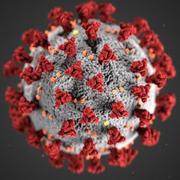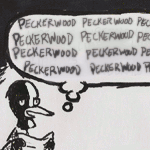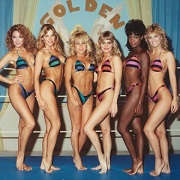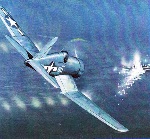|
Japan's horrible damage control has come up before, but why were they so bad at it?
|
|
|
|

|
| # ? Jun 5, 2024 14:01 |
|
Chamale posted:Japan's horrible damage control has come up before, but why were they so bad at it?
|
|
|
|
HEY GAL posted:only a small group of dudes on each ship was trained in it. those dudes are the people who run toward what's wrong, which means they're not always alive when something needs to be fixed. They also tended to view damage control as a secondary priority on the ship versus the real business of a ship, which is fighting. Japanese war machines of all sorts tended to favor speed and firepower over durability, and on their ships especially damage control systems were typically very poorly designed compared to British and especially American ships.
|
|
|
|
Ensign Expendable posted:I read a review of a Russian book on TDs recently, the conclusion was that the book had some very good pictures, but everything other than the pictures, including the captions, was poo poo. The pictures are pretty much the only reason to get them, since they aren't publicly available and a lot of them are incredibly interesting, no matter what they show. In the same book as the photo I posted, there's a photo of an odd aircraft. The "author" of the book claims it to be an IL-4 but nothing quite fits. Turns out, I may have discovered it to be a quality photo of an R-10 which I've rarely ever seen. Makes me wish I had a job identifying photos from WW2.
|
|
|
Cythereal posted:They also tended to view damage control as a secondary priority on the ship versus the real business of a ship, which is fighting. Japanese war machines of all sorts tended to favor speed and firepower over durability, and on their ships especially damage control systems were typically very poorly designed compared to British and especially American ships. The Japanese obsession with maximum performance also had bad effects on the crew. Japanese destroyer crews viewed American crew quarters as luxurious because they actually had some small amount of space to themselves. Japanese destroyer crews had basically a bunk and a trunk for each person and that's all. Bathing was done communally I think once a week and meals had to be brought to the bunks due to a lack of proper dining facilities. I think the Yamato was jokingly referred to as a floating hotel because it had a few basic amenities like tables for eating at. The trade-off is that they managed to get very fast ships. I've been aboard the USS Intrepid several times and it's practically a floating town. Everyone knows the hangers are cavernous, but there's a giant maze of rooms and hallways that stretch a hundred yards into the darkness. This reminds me of a section in The Boys of '67: Charlie Company's War in Vietnam. It details the journey of the Charlie Company soldiers to Vietnam, very early in the proper war before they even had proper bases built. Everyone was piled onto pre-WW2 cargo ships that were designed for way fewer men than they actually packed into them, so they just had to string up hammocks in the cargo bays and hope for the best. The food was incredibly awful and drat near inedible, but that only exacerbated the seasickness problem. Vomiting was so prevalent that they had to put up vomit barrels all over the "quarters" because nobody made it to the railings in time. It wasn't uncommon for people to vomit in their hammock (onto the guy below them) or on their food. The officers tried to enforce mandatory PT to distract the soldiers from anything untoward like gambling, which is an awful idea on a ship pitching and rolling in the open sea; do a jumping jack at the wrong time and find yourself suddenly breaking your legs on the way down. They ended up having their first casualty before they even made it to Vietnam. They stopped in Japan and a drunk soldier who was thrown in the brig escaped and leaped overboard.
|
|
|
|
|
Acebuckeye13 posted:It's embarrassing because halfway competent DC procedures would have almost certainly saved the ship-the bomb struck in an unlucky place, but it was just one bomb, and it didn't even cause a huge amount of initial damage. The real damage was caused by an inability to secure loose ordnance and contain the resulting fires, as that's all on Akagi's DC team and procedures. Yeah I mean had the IJN had completely different doctrines and training things would have turned out different!
|
|
|
|
Going into a bit more detail about Japanese damage control deficiencies, it's really an outgrowth of the overall IJN strategic doctrine going into WW2. The Japanese knew even in the 1920s that the United States was their most likely opponent if Japan pursued its territorial ambitions in the Pacific, most likely alongside Britain, Australia, and the Netherlands. When developing their modern strategic plans and general doctrines of behavior - and therefore the design of their equipment - the Japanese navy in particular looked back to their last major conflict beyond their involvement in WW1, the Russo-Japanese War. At the Tsushima Strait, a numerically inferior but technologically superior Japanese fleet won a decisive victory over a much larger Russian fleet through in large part the IJN's superior long-range firepower. Tsushima Strait effectively decided the entire war, limiting the land portion of the war and marking the end of Russia's Pacific ambitions. Almost everything about the Japanese military's thinking and equipment going into WW2 was based on learning the lessons of the Russo-Japanese War and hoping to perfect that experience. The IJN was looking for another Tsushima Strait, a single decisive engagement that would end American military opposition in the Pacific and convince the government that the war wasn't worth fighting. To that end, the IJN worshiped at the shrine of the offensive in military doctrine and equipment design. Speed, range, and firepower were the qualities the Japanese believed could defeat American quantity if brought to bear in decisive fashion, and such things as damage control, fuel consumption, ASW doctrine, convoy systems, merchant hunting by their own submarines and the like were deemed of secondary importance at best because they were superfluous to the decisive battle the IJN sought and believed would win the war.
|
|
|
|
Cythereal posted:They also tended to view damage control as a secondary priority on the ship versus the real business of a ship, which is fighting. Japanese war machines of all sorts tended to favor speed and firepower over durability, and on their ships especially damage control systems were typically very poorly designed compared to British and especially American ships. One example of this is in the hangar design on Japanese carriers. In contrast to American carriers which had their hangars open to the sides, Japanese carriers boxed their hangars in with other rooms. This was a problem for a few reasons. First, any explosion inside the hangar would be closed in, amplifying its force. Second, it was much more difficult to remove flammables and other dangerous objects from the hangar: this required the use of elevators that might have been disabled by the hit in the first place, in contrast to American carriers where you could just throw dangerous items overboard. And third, firefighting ships couldn't spray water into the hangar. British carriers also had closed hangars, but they also had armored decks to minimize the possibility of a hit in the hangar in the first place--a feature that both the American and Japanese shunned because it would limit the number of planes and thus the offensive fighting power of the ship. It's worth noting that later Japanese carriers like Shoukaku had bulkheads on the sides of their hangars that could blow out to vent the force of explosions, which might have prevented a loss similar to Akagi's.
|
|
|
|
Bro Enlai posted:but they also had armored decks to minimize the possibility of a hit in the hangar in the first place--a feature that both the American and Japanese shunned because it would limit the number of planes and thus the offensive fighting power of the ship. Well. The Japanese did try one carrier with an armored flight deck, and it was named Taiho. 
|
|
|
|
KYOON GRIFFEY JR posted:Akagi isn't an embarrassing loss by any stretch of the imagination. There were some design flaws around the sprinker and fire suppression system, but it's mostly nice work by Best, and then good luck that the sprinkler system was damaged from the hit. What would have been embarrassing is if Best hadn't been on his poo poo and Akagi hadn't been targeted. After the hit they may not have actually done anything wrong, and I tend to agree they didn't. What I very seriously contest is the notion that a single bomb being able to put an aircraft carrier in a state of "pack it up guys, this isn't getting fixed" is a state that you get in without very severe, embarassing flaws in the design phase. USN design made a better showing, the Yorktown and Hornet took a beating and the absolute cataclysmic worst case happened to one of their carriers with the Franklin taking two bombs in the middle of actively warming up aircraft and in the process of fueling, with the added bonus of a nice rack of 14,000 pounds of rockets on it to cook off. Unlike a great many ships that suffered serious damage, the Franklin's hull was in perfectly good shape, even after the hangar deck was a hellish cataclysm. KYOON GRIFFEY JR posted:Yeah I mean had the IJN had completely different doctrines and training things would have turned out different! Yeah, I'm pretty sure that oh gee guys we lost a ship to a hit our enemies would survive in the worst possible case and laugh off and be back in the fight in under an hour most likely is a pretty major embarrassment and sign that there's some real systemic failures. Acebuckeye13 posted:It's embarrassing because halfway competent DC procedures would have almost certainly saved the ship-the bomb struck in an unlucky place, but it was just one bomb, and it didn't even cause a huge amount of initial damage. The real damage was caused by an inability to secure loose ordnance and contain the resulting fires, as that's all on Akagi's DC team and procedures. Also on a pretty decent set of design problems and just different design decisions. Chamale posted:Japan's horrible damage control has come up before, but why were they so bad at it? First, the Japanese do have the problem of being compared to the USN. At Coral Sea, the Lexington took only bombs and two torpedoes. There were definitely some nasty hits, one bomb hit a 5" ready ammo locker and started a bunch of fire, and near miss bombs resulted in the flooding of two compartments. The torpedoes were the real problem, they caused leakage in an avgas tank, which later caused an explosion and likely continuing explosions that doomed the ship. After that fight, the US was very conscious about the risk of damage to the fueling system, and as shown by the Yorktown voided the lines whenever enemy aircraft were spotted. Franklin was unlucky in that she was caught off guard. The Japanese didn't have the benefit of that experience. So generally when hit, Japanese ships had more flammables around. Next was the design of their ships. There were two main decisions to make about carriers that would fundamentally change the shape and character of the carrier. First was if/where they put an armored deck, and the second was whether to build the hangar as superstructure on top of the ship, or to go with a fully enclosed hangar. The British put an armored deck right up top and armored the flight deck. They then stuffed a cramped little hangar in under it, as big as the topweight allowed. The US armored the hangar deck and put the rest of the ship on as superstructure. The Japanese stacked two hangars on top of each other, both enclosed in the ship, and similar to the US didn't have an armored flight deck. The superstructure hangar had some major advantages for ability to take a hit. First, it wasn't an enclosed space for explosions, which is always a bit nice. Better yet, you could open up the side of the hangar, which is really great when you have planes that are burning because their fuel is on fire and you don't want them in the hangar by the time they reach the stage where they're burning because their aluminum structure is on fire. Another nice thing about having holes in the side of the hangar is you can open them up if your sprinklers or pumps are damaged and have a destroyer from your screen pull up and pour water into you. These are all a great help in making the difference between a fire and an all-consuming inferno. There's also some detail design differences and the USN taking making sure they had firefighting supplies of water much more seriously than the IJN. The firefighting mains on IJN carriers were subdivided into Port and Starboard. That's it, have fun. My guess is this has a lot to do with the fire from a single hit making the ship unsalvageable. The US subdivided better and had an incredible fondness for man portable gasoline powered pumps in case electrical power was lost. Last is another major one. In the USN, damage control was something everyone did, they took measures to keep their damage control personnel safe until needed, and they had a large core of long service NCOs. In Japan, damage control was a specialty, the members of that specialty were prone to die in the hits they were needed to deal with, and the Japanese navy didn't have the same core of generalist expertise in their NCOs because they relied a lot on conscription, which resulted in three years' service, while volunteers served for five. A ship that's had its damage control experts killed is in bad shape in nearly any situation. I'm probably forgetting things. Edit: Well poo poo, I think overall everything's gotten covered in the time it took me to type this. Cythereal posted:Going into a bit more detail about Japanese damage control deficiencies, it's really an outgrowth of the overall IJN strategic doctrine going into WW2. I do find it kind of amusing that after taking the example of a war where their enemy's ships burned the gently caress up, they made ships that didn't do well against fire. xthetenth fucked around with this message at 23:30 on Oct 9, 2015 |
|
|
|
chitoryu12 posted:Honestly, it's a shame Operation Sealion was never attempted. We can only laugh about the imagined epic failure. Now ok, we all crack jokes here and stuff, but tbh even trying Seel÷we would have caused a horrible amount of casualties, and not all of those would have been moustache twirling villains. And speaking about jokes, Keldoclock, I don't know much about gun stuff except about those few gun I've used or some famous guns I've read about, but you could ease about the honour stuff and restrict your posting to guns or something else you know about. I don't think that you should atm be compared to  who used to post in the ancient history thread about how he is a better person than the rest of us because he's an aristocrat (because he was a lawyer). But if you continue your current posting, then maybe I also will think that you are a loving snob/tard. I mean, what's the deal about posting that you wouldn't serve as an enlisted man? It's not like you can decide that yourself in a real army. who used to post in the ancient history thread about how he is a better person than the rest of us because he's an aristocrat (because he was a lawyer). But if you continue your current posting, then maybe I also will think that you are a loving snob/tard. I mean, what's the deal about posting that you wouldn't serve as an enlisted man? It's not like you can decide that yourself in a real army.
Hogge Wild fucked around with this message at 23:47 on Oct 9, 2015 |
|
|
|
xthetenth posted:I do find it kind of amusing that after taking the example of a war where their enemy's ships burned the gently caress up, they made ships that didn't do well against fire. At the most basic level, I think, it came down to this: the Japanese and the Americans had different priorities when it came to their general equipment design, strategic plans, operational doctrine, training, and organization going into WW2, and both struggled to fit an entirely new weapon of war - the aircraft carrier - into that existing organizational paradigm. Despite the numerous Japanese successes, the USN as an organization was better prepared for the realities of the Pacific War even aside from specific leaders and operational plans.
|
|
|
|
quote:The Japanese didn't have the benefit of that experience. So generally when hit, Japanese ships had more flammables around. What do you mean? Midway was only 6 months into the war, why didn't they re-design their aircraft carriers, or at least, re-train their sailors to be better at handling these scenarios?
|
|
|
|
sullat posted:What do you mean? Midway was only 6 months into the war, why didn't they re-design their aircraft carriers, or at least, re-train their sailors to be better at handling these scenarios? Short version: too little, too late. They did both. Taiho for one had a fully armored flight deck and an extra thick armor belt, and all later Japanese carriers had better damage control design and training. However, carriers take a very long time to build unless you're an industrial behemoth like the US, and the later carriers didn't arrive in time to make a big difference and were sunk by the ascendant USN regardless.
|
|
|
|
sullat posted:What do you mean? Midway was only 6 months into the war, why didn't they re-design their aircraft carriers, or at least, re-train their sailors to be better at handling these scenarios? The main thing is that between Midway and Coral Sea, the US decided that they really ought to pump CO2 into the fuelling equipment to void it when there was a danger of getting hit after the experience with the Lexington. So that made the fueling equipment nullified as an existential threat.
|
|
|
|
sullat posted:What do you mean? Midway was only 6 months into the war, why didn't they re-design their aircraft carriers, or at least, re-train their sailors to be better at handling these scenarios? We're all pulling from Shattered Sword here, so I'll just continue parroting that excellent work. One thing that really hurt the Japanese Navy is that they had a very poor policy in regards to using up their veterans. It was rather notorious with their pilots, where they'd basically just expect their aces to keep fighting over and over, pulling rabbits out of the hat again and again. That sort of A-Team action hero concept is great for creating super aces and hand-picked squads that can punch above their weight, but it also means that no one else gets the benefit of their experience. The US would pull its veterans back from the front lines and put them to work in training schools, ensuring that their students would get the most up-to-date training and experience. And that difference in policy extended throughout the entire fleet - the veteran IJN damage control specialists would never be brought home, and never get an opportunity to refresh the training courses. Indeed during the war IJN trainees got less and less training because they were so badly needed on the front-lines, which only compounded the problems. While the quality of the USN training school graduates would only continue to improve as the war went on, the quality of the IJN graduates would significantly decline. And it should be remembered that part of this is simply the qualitative economic differences between Japan and the US: The United States could afford to pull its fleets back, redesign their ships and retrain their sailors - but Japan couldn't. The fundamental strategic goal of the IJN was to engage the USN early on in a definitive engagement - leveraging the advantage in experience and technical capability of their pre-war navy against the relatively inexperienced Americans. Sitting back and resetting their entire fleet would have run completely against that strategic goal. Kaal fucked around with this message at 01:00 on Oct 10, 2015 |
|
|
|
how people do pedagogy is kinda interesting, like how long it took western europe to start training people en masse despite the existence of drill manuals from the beginning of the century
|
|
|
|
sullat posted:What do you mean? Midway was only 6 months into the war, why didn't they re-design their aircraft carriers, or at least, re-train their sailors to be better at handling these scenarios? Changing something would imply that it had not been done correctly in the first place.
|
|
|
|

|
|
|
|
A whole bunch of stuff on the M4 Sherman, from another forum that I hang out on. (M4 stuff isn't by me, obviously)
|
|
|
|
Cythereal posted:Following up on the Taiho note, for anyone who's interested here's the full tally of Japanese full carriers (leaving aside the escorts): Did the Japanese have a dedicated gyro-plane carrier, with gyro-planes specialized in the ASW role? e: also Taiho might be the platonic example as to why good damage control is important. Nebakenezzer fucked around with this message at 01:56 on Oct 10, 2015 |
|
|
|
Kaal posted:We're all pulling from Shattered Sword here, so I'll just continue parroting that excellent work. One thing that really hurt the Japanese Navy is that they had a very poor policy in regards to using up their veterans. It was rather notorious with their pilots, where they'd basically just expect their aces to keep fighting over and over, pulling rabbits out of the hat again and again. That sort of A-Team action hero concept is great for creating super aces and hand-picked squads that can punch above their weight, but it also means that no one else gets the benefit of their experience. The US would pull its veterans back from the front lines and put them to work in training schools, ensuring that their students would get the most up-to-date training and experience. And that difference in policy extended throughout the entire fleet - the veteran IJN damage control specialists would never be brought home, and never get an opportunity to refresh the training courses. Indeed during the war IJN trainees got less and less training because they were so badly needed on the front-lines, which only compounded the problems. While the quality of the USN training school graduates would only continue to improve as the war went on, the quality of the IJN graduates would significantly decline. Also important to remember is that Japan never, ever intended to fight the kind of war the Pacific theater turned into. They went in expecting to get Russo-Japanese War 2: Pacific Boogaloo. One or two decisive engagements in Japanese-friendly waters where superior Japanese offensive quality would destroy the enemy's ability to project force into the area Japan wanted and in so doing severely limit the scope of the war with the ultimate goal of Japan taking an empire for itself and letting it build up into the kind of colonial empire the great European powers had - the British were a particular role model. And to be fair, the opening Japanese strikes against the British, Dutch, and Australians worked perfectly from a strategic point of view. Even against the American Asiatic Squadron. Japan's problems started when Pearl Harbor proved to not be another Tsushima Strait.
|
|
|
|
xthetenth posted:Also, regarding fighters and Hartmann, it's really fun to normalize by sorties flown. For example, James Thach's five kills aren't that impressive until you account for him literally only seeing enemy planes on five sorties. Some US pilots start looking a lot better because they didn't get run into the ground with continual sorties. Three of those kills specifically came during Midway where he apparently not only put his 'Thatch Weave' into actual use, but also explained how it worked to the rest of his flight before doing it. They lost only one fighter and claimed 4 kills (Thatch had 3) despite being outnumbered I believe.
|
|
|
|
Cythereal posted:Japan's problems started when Pearl Harbor proved to not be another Tsushima Strait. Well, it's more that the 1942 campaign was much more destructive to the Japanese than Yellow Sea, and left them in a very bad position for a much larger second force. And if we weren't talking about Japanese planning for WWII I'd worry I was torturing the metaphor. But more accurately they fought the battles of 1942 as something like their idea of initial sparring between carriers and light forces, and didn't realize it was a prelude to the decisive battle, it was the decisive campaign, and they needed to outright win it. (Also the Japanese crewing issues are discussed in Kaigun as well, which is pretty fantastic and I need to finish Sunburst). Taerkar posted:Three of those kills specifically came during Midway where he apparently not only put his 'Thatch Weave' into actual use, but also explained how it worked to the rest of his flight before doing it. They lost only one fighter and claimed 4 kills (Thatch had 3) despite being outnumbered I believe. I believe it was, and if I remember right it was pretty key in getting one of the bomber squadrons through. Overall, the US had a lot of things go very right at Midway. A lot of its top pilots turned in great performances, the brunt of their end of the fight fell on their veteran carrier, and continual pressure resulted in things eventually going right (it's all right Nautilus, all your effort came through in a big way). xthetenth fucked around with this message at 02:32 on Oct 10, 2015 |
|
|
|
Quick question, I know pitched battles have generally been given too much emphasis in popular history (especially compared to sieges), but in what periods in history would people think they might have assumed maximum importance and why? Napoleonic Era maybe? Alexandrian conquests and the subsequent Hellenistic wars perhaps?
|
|
|
|
It's also worth mentioning that in addition to fighting the US and her Allies, the IJN was fighting an almost-equally existential war with the IJA.
|
|
|
|
Cythereal posted:Japan's problems started when Pearl Harbor proved to not be another Tsushima Strait. FWIW, Pearl was never intended to be another Tsushima Strait. The decisive battle was supposed to happen closer to Japanese home waters, in or near the Philippine Sea, in the same way that Tsushima was close to Japan and far from Russian port. The Japanese strategy was to invade the Philippines, the Americans would sail with their Pacific Fleet to relieve the Philippines, they'd be harassed and softened up by subs and land-based air from the Marianas and Marshall Islands en route, and then the Japanese battleline would defeat the American battleships. Pearl was supposed to be just a raid to soften up the American fleet before they could even sail, and it turned out to be much more effective than expected and the Americans never moved to relieve for the Philippines. So then you need to find another way to lure the Americans out, so you plan to attack Midway as a lure, and then...
|
|
|
|
Pearl is analagous to Port Arthur.
|
|
|
|
Cythereal posted:Also important to remember is that Japan never, ever intended to fight the kind of war the Pacific theater turned into. They went in expecting to get Russo-Japanese War 2: Pacific Boogaloo. One or two decisive engagements in Japanese-friendly waters where superior Japanese offensive quality would destroy the enemy's ability to project force into the area Japan wanted and in so doing severely limit the scope of the war with the ultimate goal of Japan taking an empire for itself and letting it build up into the kind of colonial empire the great European powers had - the British were a particular role model. And to be fair, the opening Japanese strikes against the British, Dutch, and Australians worked perfectly from a strategic point of view. Even against the American Asiatic Squadron. Trying to repeat Tsushima on multiple opponents was a mistake. Attacking multiple opponents draws them into an alliance against you, and they're all going to make agreements with each other to not make peace one-by-one. Japan was not politically isolated pre-WW1, but was politically isolated in WW2. Heck, Japan was politically isolated even before WW2 kicked off in Poland, the IJA atrocities in China made news all over the world, and the US was already sending munitions and mercenaries to the ROC before Pearl Harbour. People often forget that pre-CCP takeover, China was heavily globalised with tons of international trade, and Japan trying to take over pissed in alot of people's pies. The KMT had a big pro-China lobby in the US, they worked hard to set up this alliance. The IJN willfully ignored the natural political alliances between its enemies.
|
|
|
|
Page 688 and no one mentions the most successful attack nuclear sub design in history. A shameful thread.
|
|
|
|
Baloogan posted:Page 688 and no one mentions the most successful attack nuclear sub design in history. A shameful thread. By most successful, you mean never having been used in combat and having been defeated, right?
|
|
|
|
Comstar posted:By most successful, you mean never having been used in combat and having been defeated, right? I'll have you know they were used to great effect during the hunt for Red October.
|
|
|
|
Young Men's Communist Association? e: I'll leave it up because it was a hell of a swing and a miss but for some reason my mind just went straight to "reds?"
|
|
|
|
Don't know how accurate this is, but it's how I learned about Tsushima and I find it hilarious
|
|
|
|
JcDent posted:Don't know how accurate this is, but it's how I learned about Tsushima and I find it hilarious Great, now my eye is twitching uncontrollably. Go read Constantine Pleshakov's The Tsar's Last Armada and sin no more. Vincent Van Goatse fucked around with this message at 08:00 on Oct 10, 2015 |
|
|
|
ALL-PRO SEXMAN posted:Great, now my eye is twitching uncontrollably. Honestly the Russo-Japanese War was lost on land before Tsushima. Kuropatkin's immense caution combined with Stessel's terrible mismanagement of Port Arthur's defence meant that a lot of the wrong lessons were taken away by observers (such as the continued belief in the effectiveness of frontal assault and elan) which is part of how the First World War starts out as such a mess. Still want to pick up a copy of Pleshakov, ofc. I have Brusilov's "A Soldier's Note-Book" and need a complementary Imperial naval volume.
|
|
|
|
Hogge Wild posted:, but you could ease about the honour stuff Hogge Wild posted:you are a loving snob Hogge Wild posted:/tard. Hogge Wild posted:I mean, what's the deal about posting that you wouldn't serve as an enlisted man? It's not like you can decide that yourself in a real army.  Anyways, I am here to discuss military, history and especially military history. My alleged sanity or lack thereof really ought not to have anything to do with that. I hope this is the last page of this whole sordid chapter; I'm going to go back to the policy I suggested before many many posts of dubious quality appeared in this thread and suggest that anyone who wants to talk to me about personal opinions not strictly related to the topic at hand reach out to me by email, skype, irc, telephone, carrier pidgeon, pony express, cjnds, because I won't post them in this thread even if asked, to maintain the information/entertainment density. ↓ ↓ ↓ An IQ test is an IQ test. I see that you know just as well as I do how non-representative they are, but it's a nice quick number, and is better than me giving you a loving spreadsheet of all of the various standardized tests I have taken in my life.That is the score of the first and only IQ test I have ever taken. Now that I've seen the test I can make it spit out any score I want so there's no point doing them. I think I have basically the same level of intelligence as a stupid engineer or an exceptionally smart mechanic, fwiw. I'm sure I'm within a standard deviation of average for the posters in this thread.Are we done? Can we move on to talking about more interesting poo poo than me? Please respond by just continuing one of the other discussions in this thread or starting a new one, so that we can get out of this quagmire without referencing it in a way that will extend it. Keldoclock fucked around with this message at 08:46 on Oct 10, 2015 |
|
|
|
Keldoclock posted:IQ 125 lol e: quote:↓ ↓ ↓ LOL Nenonen fucked around with this message at 09:22 on Oct 10, 2015 |
|
|
Keldoclock posted:STOP POSTING. STOP. POSTING.
|
|
|
|
|

|
| # ? Jun 5, 2024 14:01 |
|
Acebuckeye13 posted:I'll have you know they were used to great effect during the hunt for Red October. Also proven to be effective against Japanese fishing boats .
|
|
|










































